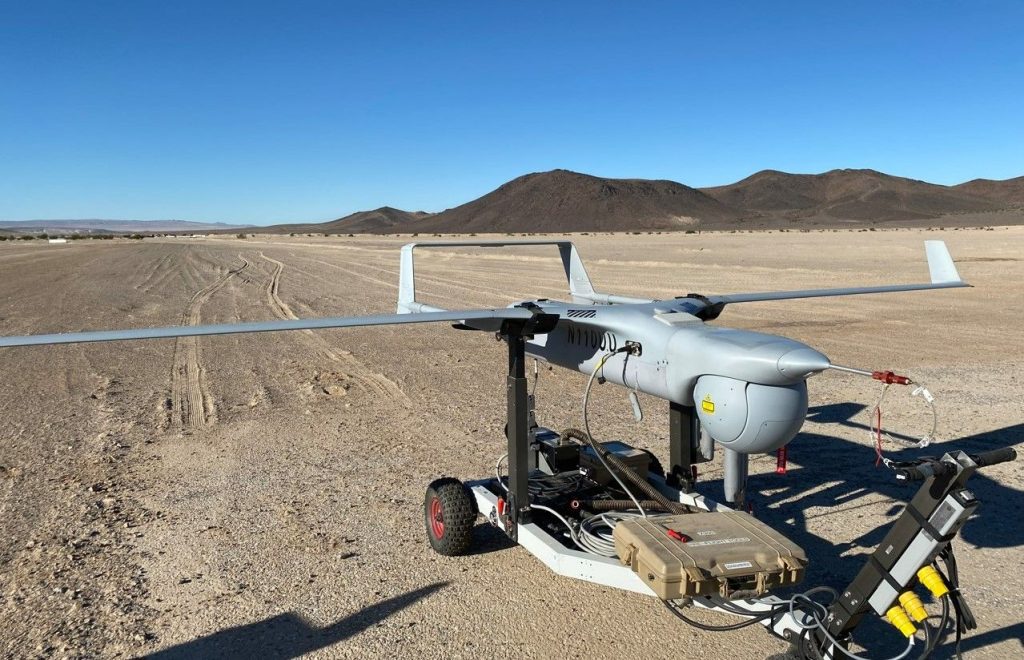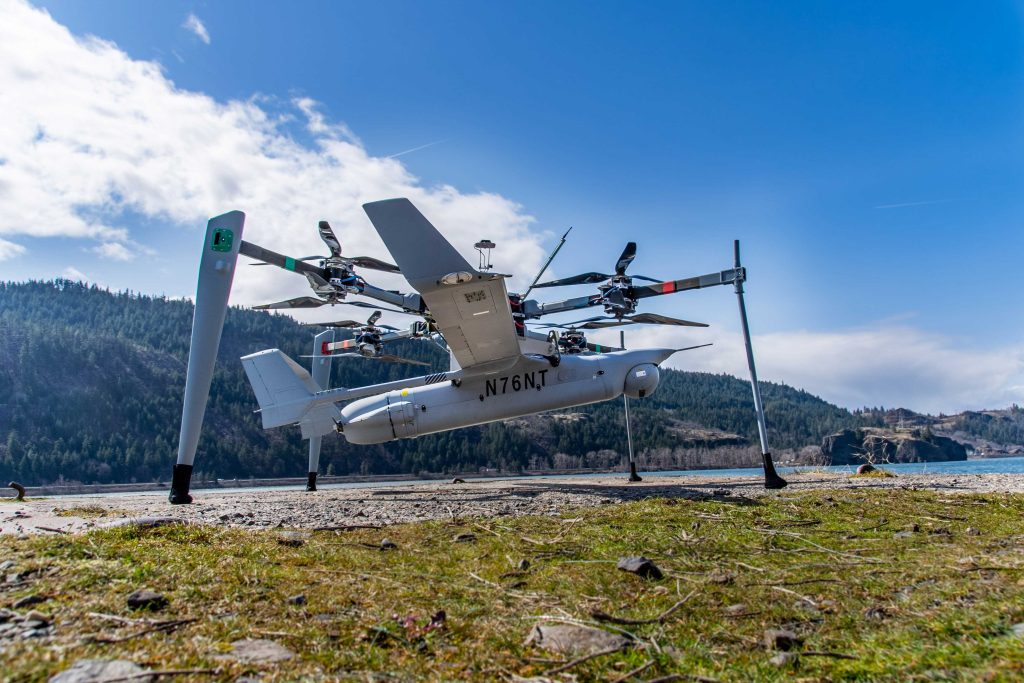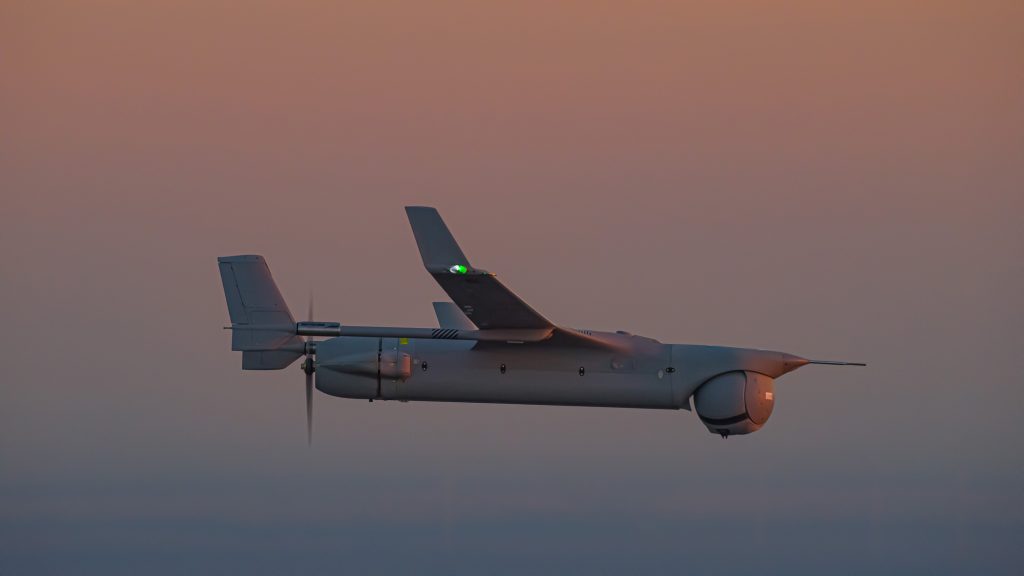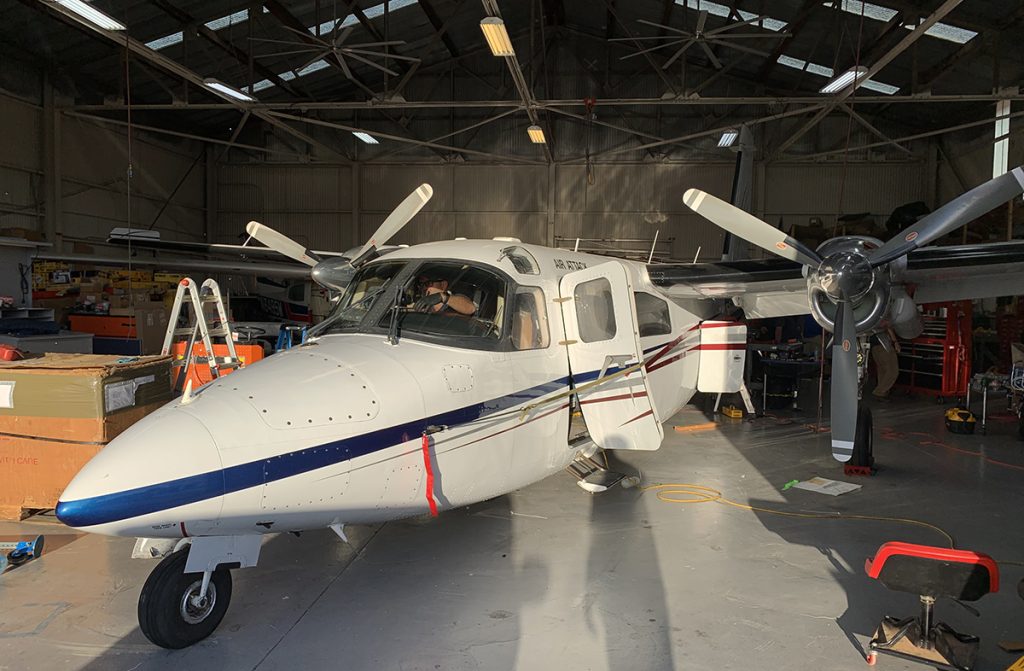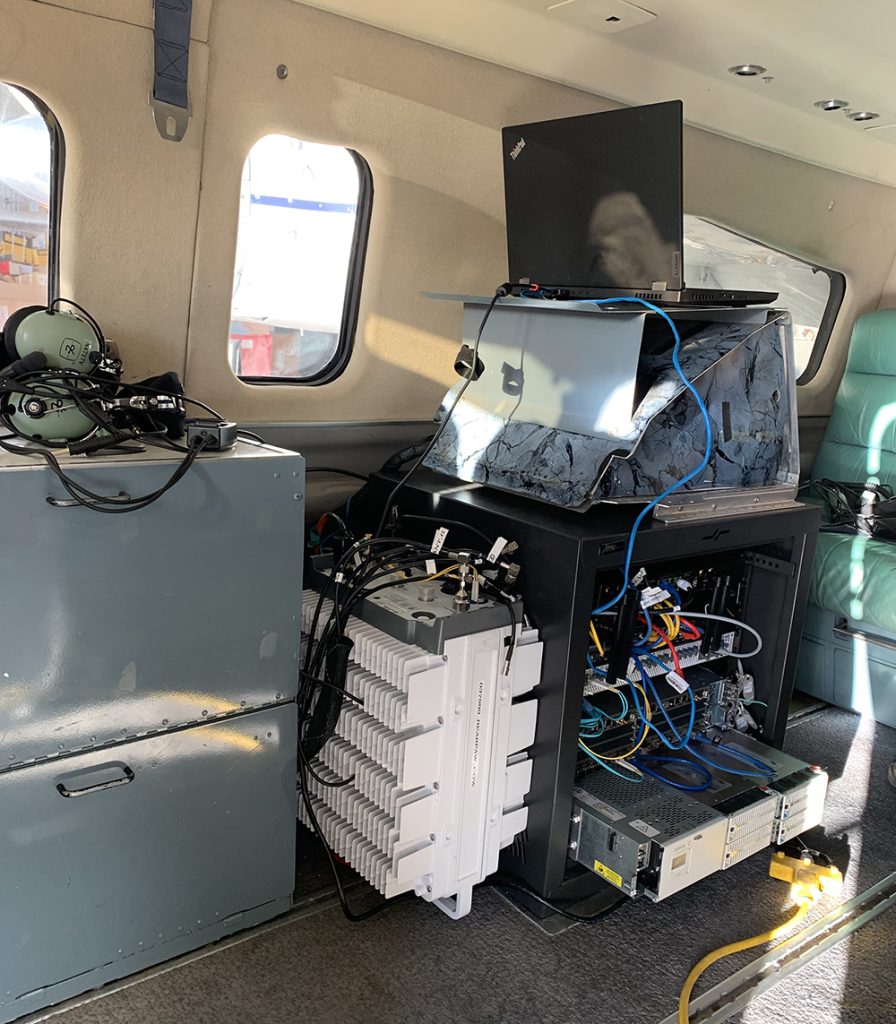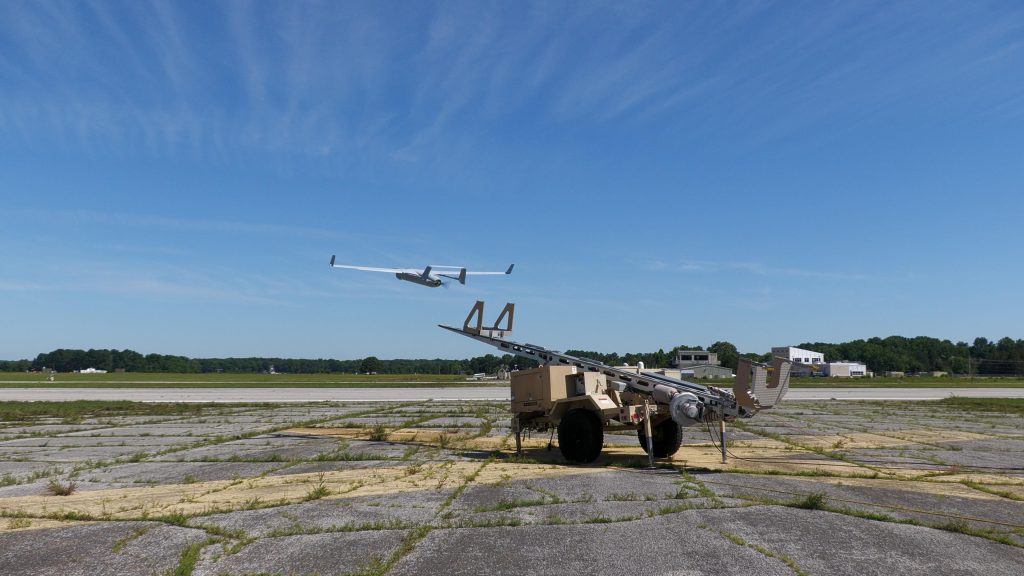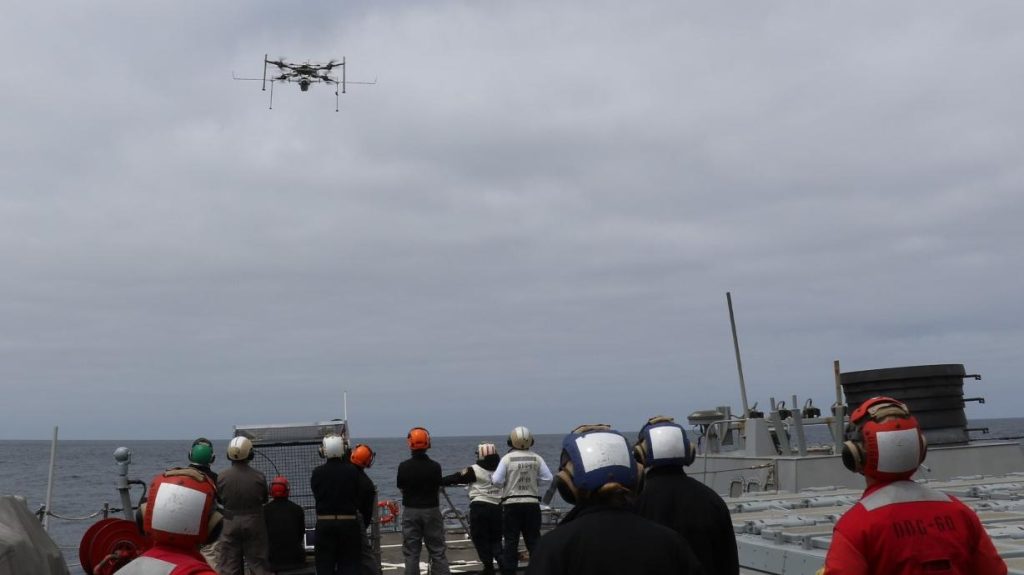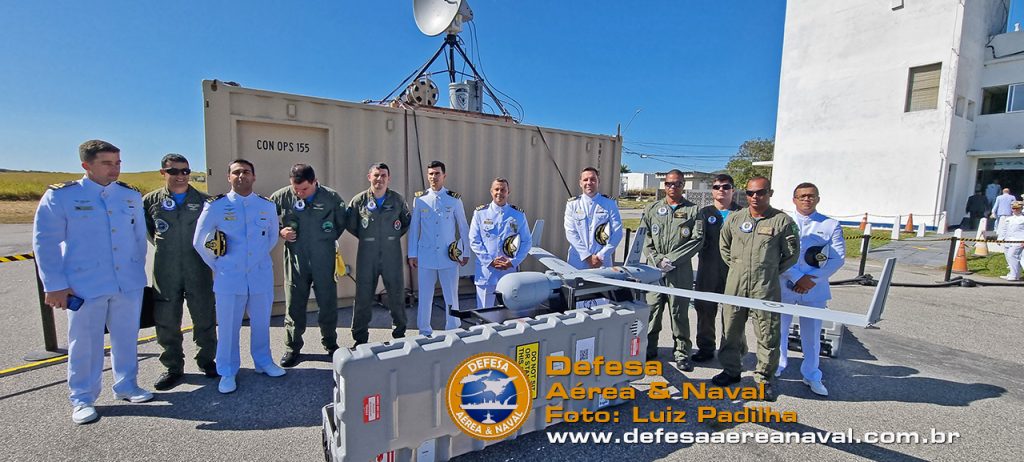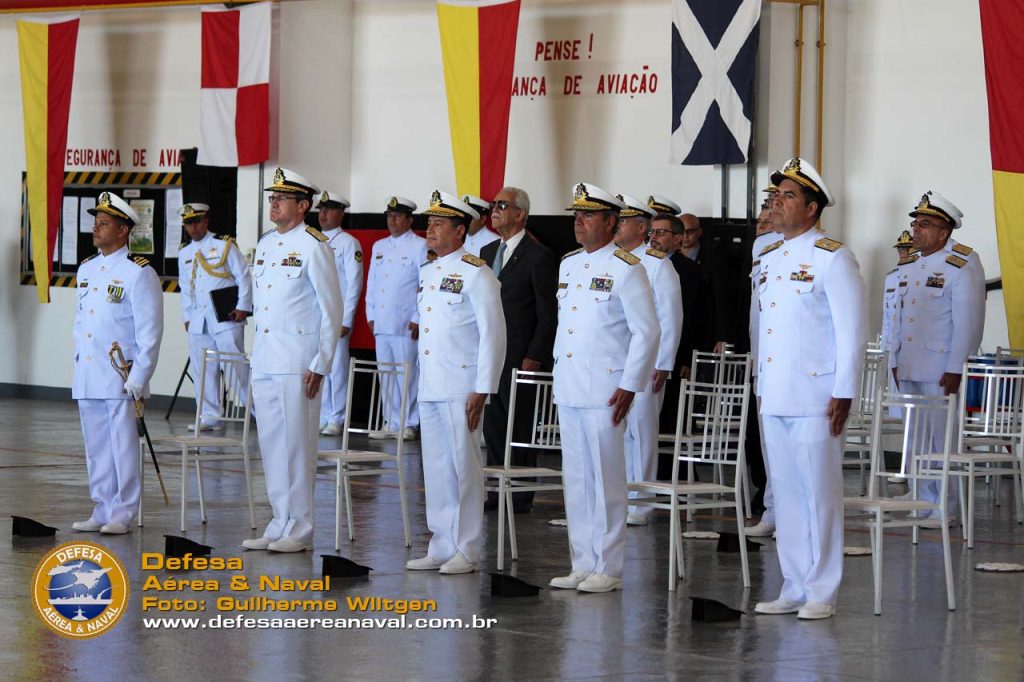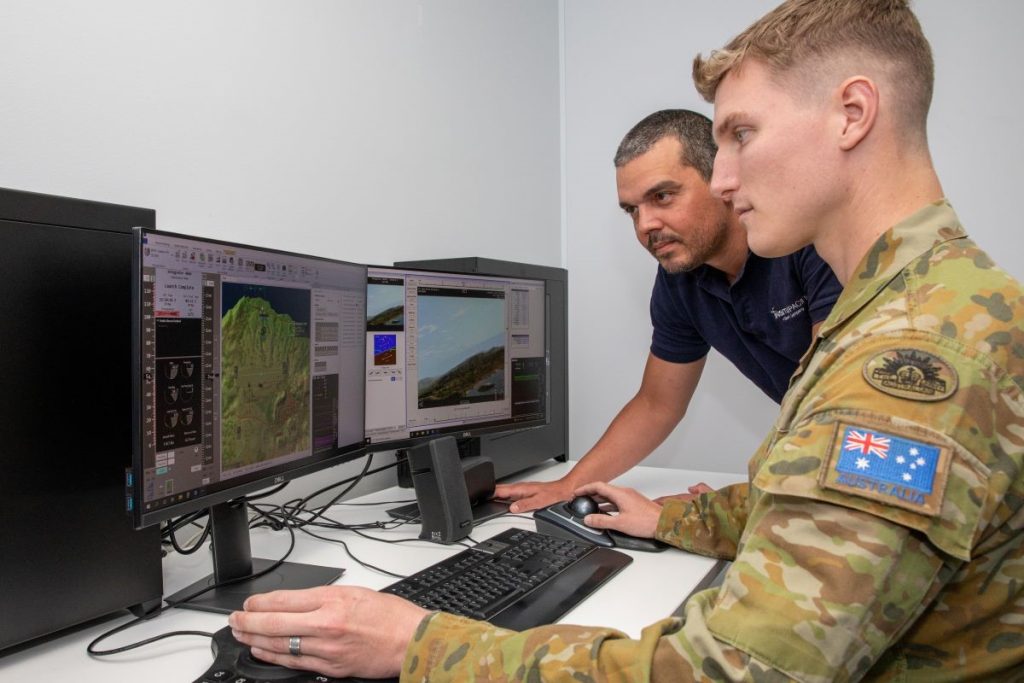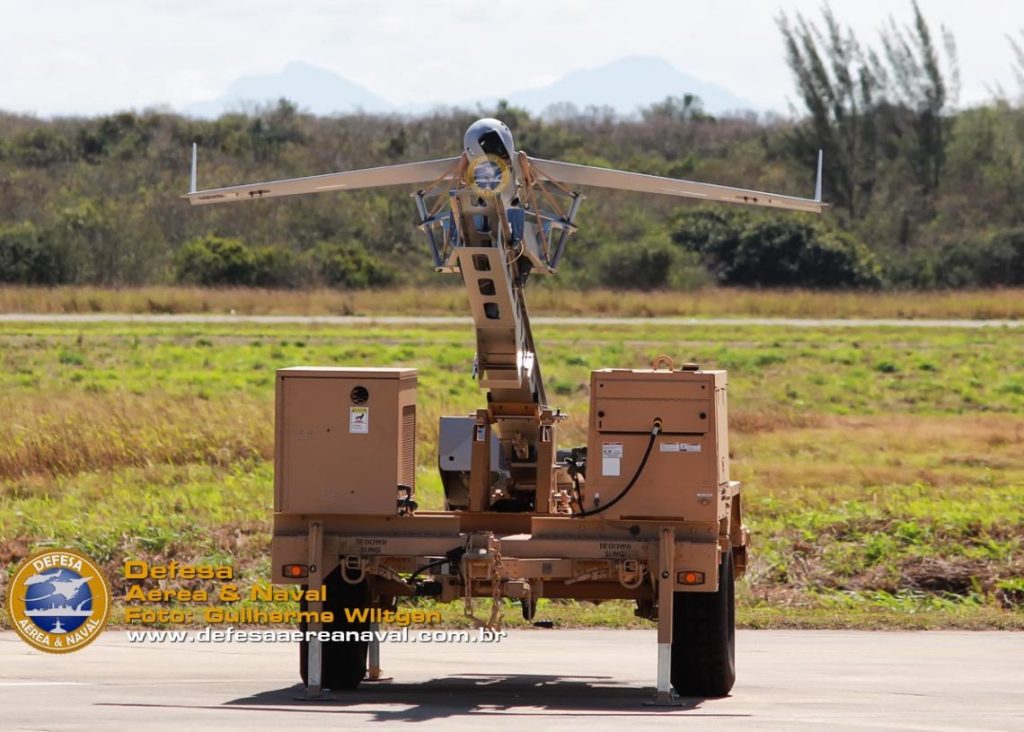
QE-1 Squadron Completes 1 Year of Service
Original story (in Portuguese) at Defesa Aéria & Naval by Guilherme Wiltgen (Translated by Google Translate)
The 1st Squadron of Remotely Piloted Aircraft (EsqdQE-1) was created by Ordinance nº 90/MB/MD of March 29, 2021, by the then Navy Commander AE Ilques Barbosa Júnior, and activated at the Naval Air Base of São Pedro da Aldeia on the 5th of July 2022.
The new Squadron is subordinate to the Naval Air Force Command and will have the purpose of contributing to the decision-making process of planning and use of Naval Power through the use of Remotely Piloted Aircraft (RPA).
The activation of the QE-1 Squadron initiated the 5th phase of Brazilian Naval Aviation, with Frigate Captain Fabio Bernardo Nunes being appointed as the first Commander.
The military ceremony took place at the Naval Air Base of São Pedro da Aldeia and was attended by the Commander of the Navy, Admiral of the Squadron Almir Garnier Santos, the Commander of Naval Operations, Admiral of the Squadron Marcos Sampaio Olsen, the General Director of Navy Material, Fleet Admiral José Augusto Vieira da Cunha de Menezes, the Fleet Commander-in-Chief, Vice-Admiral Arthur Fernando Bettega Correa and the Naval Air Force Commander, Rear Admiral José Augusto Augusto José da Silva Fonseca Junior.
The Harpy Squad
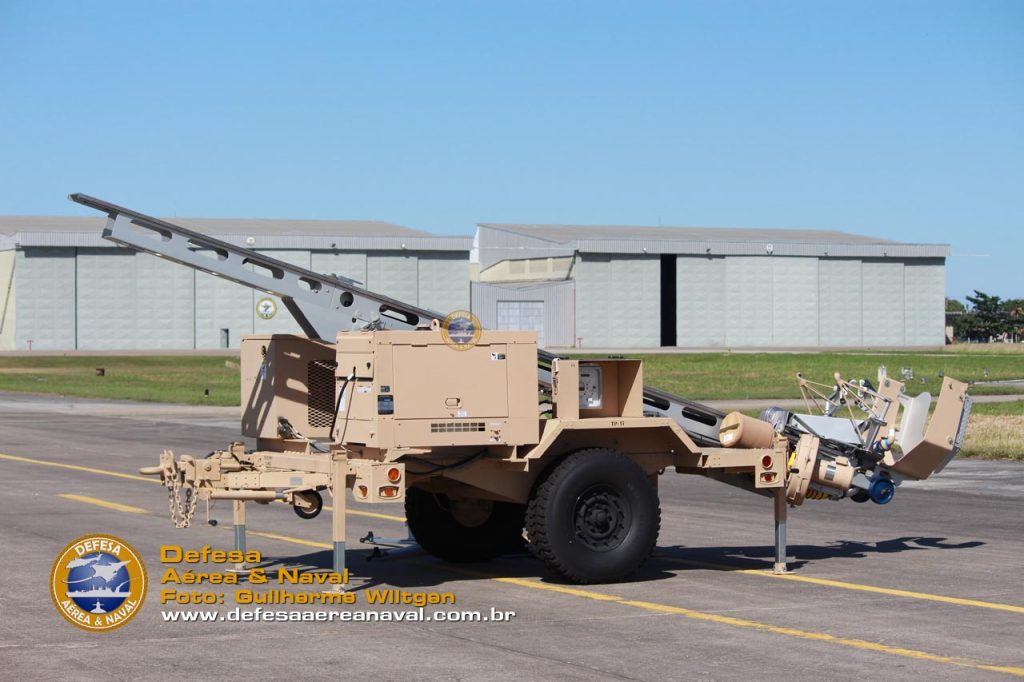
The new Squadron chose as its symbol the Harpy, one of the largest birds of prey in the world, found in Brazil in the Amazon and Atlantic Forest region. The QE-1 has a crew of 37 soldiers, including ten officers (eight pilots trained at the manufacturer) and 27 enlisted personnel, all from different Navy fixed and rotary wing squadrons.
Its aeronautical collection consists of six Remotely Piloted Aircraft Onboard Systems (SARP-E), designated RQ-1 ScanEagle with registration numbers N-8001 to N-8006, two launchers (one onboard and one on land) and two recovery systems. The Harpia Squadron shares the “ALFA” hangar of the HA-1 Squadron, located at the São Pedro da Aldeia Naval Air Base (BAeNSPA).
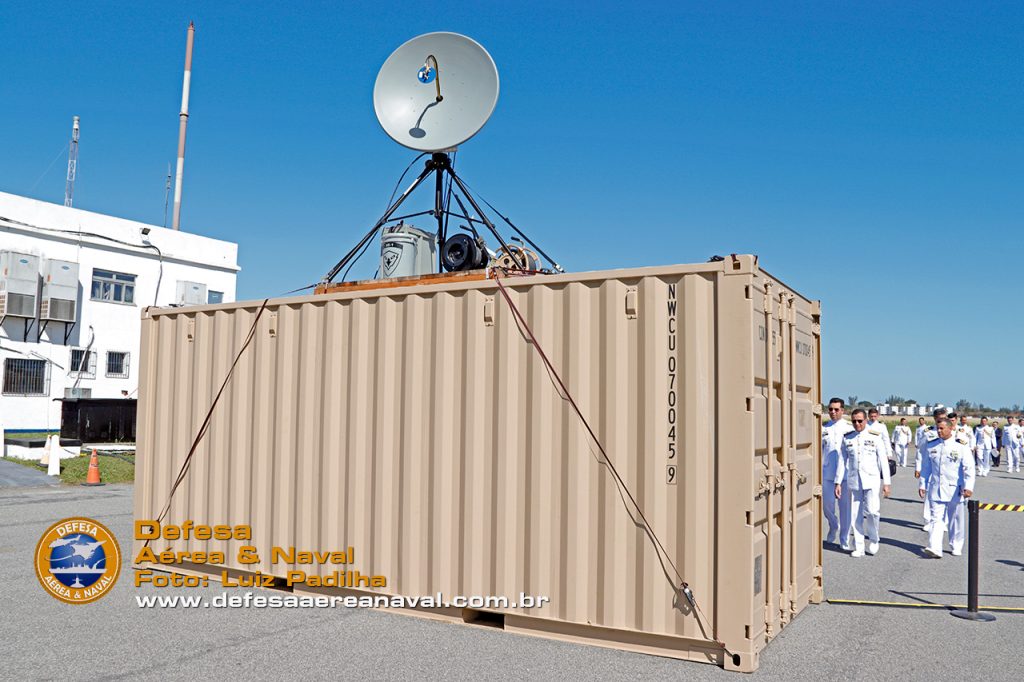
On March 23 and 25, 2022, the Deployment Nucleus of the 1st Squadron of Remotely Piloted Aircraft (NI-EsqdQE-1) received from the Material Sector, the equipment that makes up the Onboard Remotely Piloted Aircraft System (SARP-E) ScanEagle. The 25 tons of material were transported by air from the United States of America to Brazil and nine trucks transported all the material and equipment to the facilities of the future QE-1 Squadron.
First Flights
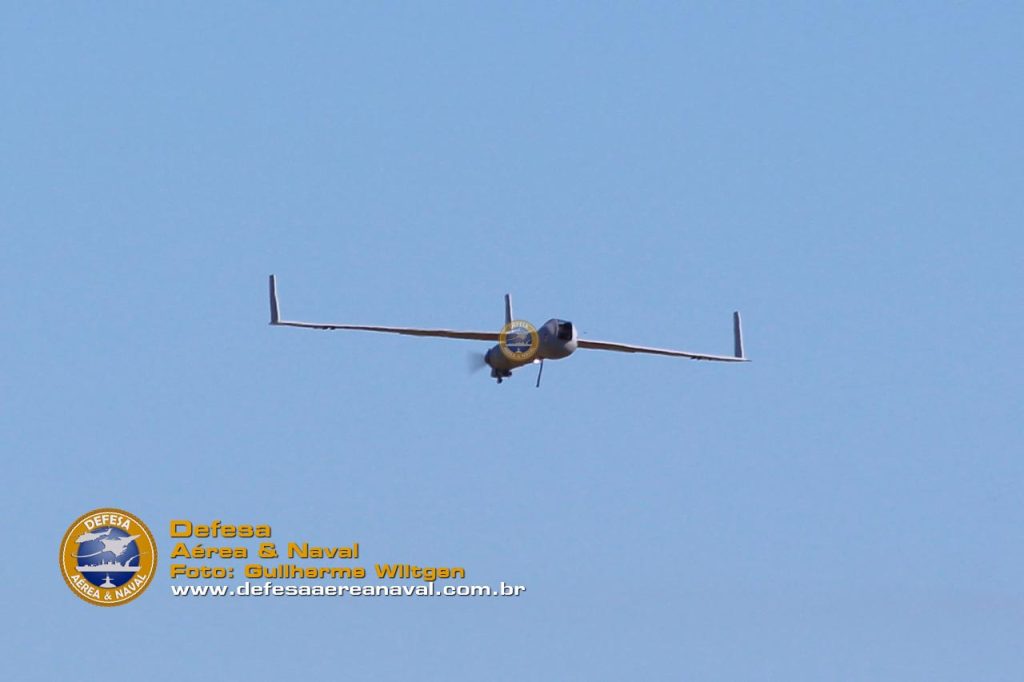
RQ-1 SanEagle N-8001
The first launch of ScanEagle was carried out in the afternoon of 06/27/22, at the Naval Air Base of São Pedro da Aldeia, using the RQ-1 N-8001.
On May 3, the first night launch of a Remotely Piloted Aircraft in the Brazilian Navy was carried out, an important operational milestone for the Squadron, starting the use of its RQ-1 ScanEagle aircraft.
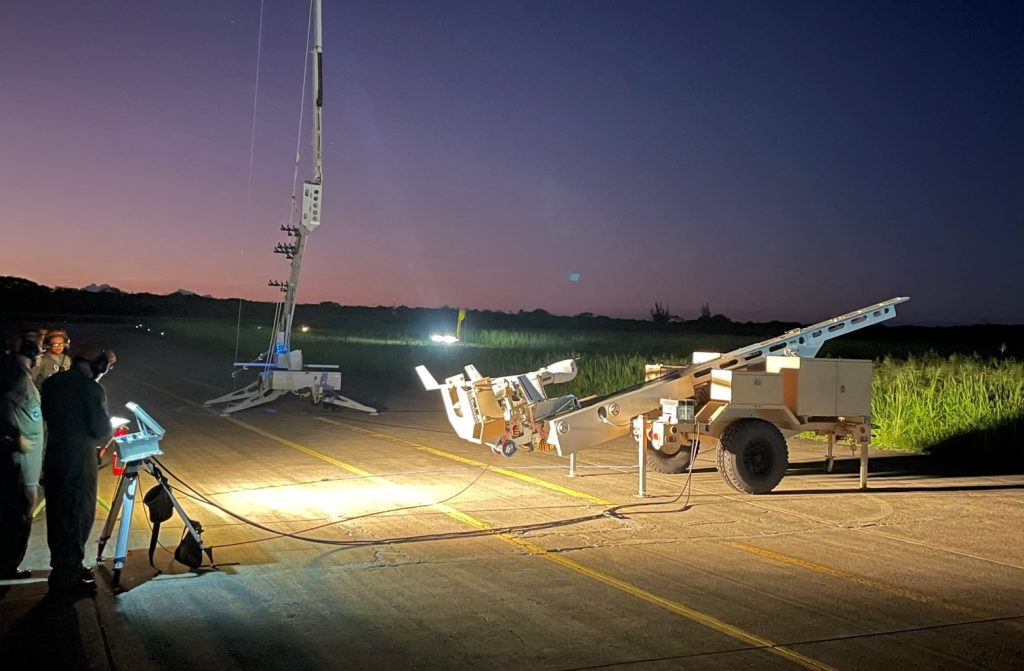
The first night flight took place on September 19, with the launch of the ScanEagle configured with the MWIR 3.5 camera, which allows the acquisition of night images due to the use of the infrared spectrum, and can be used in night missions of Clarification in support of Special Operations, Actions against Transboundary and Environmental Crimes, Humanitarian Operations, Disaster Monitoring and others.
On that same date, another important operational milestone was reached with the first double launch of ScanEagle on the same day, totaling about 10 hours of flight, with the first ScanEagle being launched at 10:00 am and the second picked up at 10:00 pm.

Its current commander is Sea and War Captain Fabio Bernardo Nunes.
Ex Occulto Investigare Et Agnoscere
(Of the Occult, Clarify and Identify)
More News
Brazilian Navy makes first ScanEagle drone launch
July 02, 2022Read more
Recent News
Insitu Pacific’s Uncrewed Next-gen Sensors Demonstrated at U.S. Army Exercise
Insitu Pacific demonstrated next generation sensor capabilities and autonomous technologies in California as part of the U.S. Army’s Project Convergence 2022 late last year.
Read More »Insitu Announces its High Seas, Long Endurance Integrator VTOL Uncrewed Aircraft System at Navy League’s Sea-Air-Space Global Maritime Expo
Integrator VTOL launches vertically on ships or land without sacrificing payload capacity or endurance.
Read More »Insitu Sets Company Record for Longest Flight at 25.5 hours with its Integrator Uncrewed Aircraft System
Insitu, A Boeing Company, recently set a company record for the longest duration flight with a 25.5-hour sortie with its Integrator Uncrewed Aircraft System (UAS) on an operational mission.
Read More »